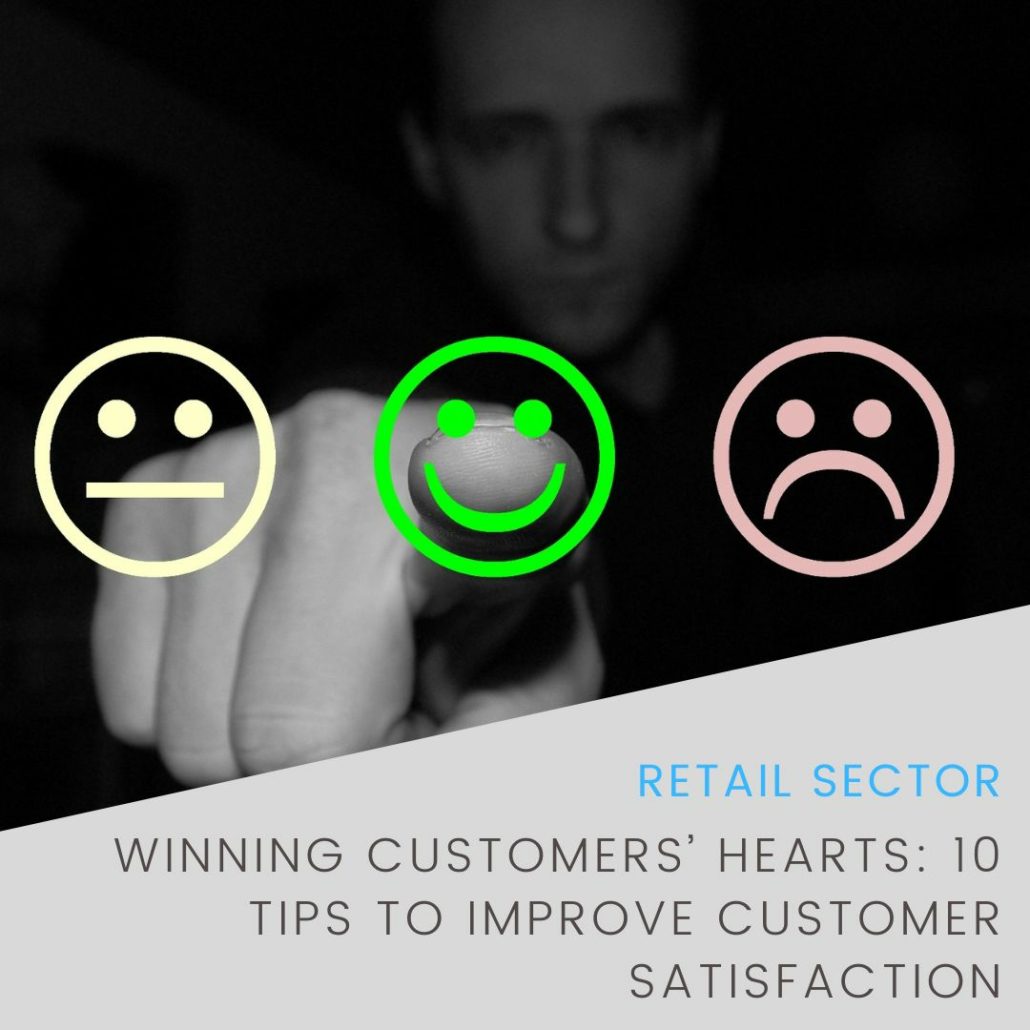Customers are the lifeblood of a business. They are not only the driving force behind your business’s survival but also the source of your revenue. While regular customers are valuable, satisfied customers bring even greater benefits.
In fact, HubSpot shared that 69% of customers are likely to keep buying from companies that offer excellent customer service while at least 86% of buyers are willing to pay more for a great customer experience.
Satisfied customers are likely to make additional purchases within a shorter timeframe and when you earn their loyalty, they become advocates who spread positive word-of-mouth about your products or services. They also tend to refer others to your business, thereby expanding your customer base. Thus, customer satisfaction adds a lot of value to a business cycle.
Gone are the days when customers would solely base their purchasing decisions on product features or price. Instead, they now seek exceptional experiences and personalized interactions that go beyond mere transactions.
But First, What is Customer Satisfaction?
In simple words, customer satisfaction measures how well a product, service, or overall experience meets or exceeds the expectations of a customer. It directly influences the retention of current customers, the acquisition of new ones, and their willingness to spend more.
Gartner revealed that almost 81% of marketers view customer satisfaction as the main competition area in their industry.
In this blog, we will discuss ten effective tips that can help you discover how to guarantee your customers’ satisfaction with your brand by improving customer satisfaction, enabling better brand perception, and increasing long-term customer loyalty.
Importance of Customer Satisfaction for Businesses
It may be tempting to move on from a customer once they leave your store or website. However, it is vital to understand why it is worth the effort to follow up with customers and prioritize their satisfaction.
Here are several reasons measuring customer satisfaction and striving to improve it are so important:
Customer loyalty
As the saying goes, “Customer loyalty can’t be bought; it must be earned.”
When your customers are content with your brand, they develop trust and loyalty. These loyal customers contribute significantly to your revenue by providing repeat business.
Losing customers has a substantial impact on both your revenue and customer churn metrics. According to Adobe’s report, loyal customers spend 67% more than new customers through repeat orders, upsells, and other means.
Additionally, positive word-of-mouth recommendations from loyal customers to their friends and family can have a cumulative effect.
Considering these long-term benefits, it is crucial to prioritize customer success to ensure that satisfied existing clients feel confident in promoting your brand based on their positive experiences.
Improved customer retention and reduced churn rate
Customer churn, or customer attrition, quantifies the number of customers who cease purchasing from a company within a specific timeframe.
For example, if a company commenced a quarter with 600 clients and concluded it with 450, it experienced a reduction of one-fourth in its customer count. Hence, the churn rate for that quarter amounts to 25 percent.
Unhappy customers tend to switch to competitors, resulting in significant financial losses for businesses. But by prioritizing customer satisfaction, companies can mitigate customer churn and retain their valuable customer base, saving costs associated with acquiring new customers.
Additionally, satisfied customers tend to stay with a company for longer periods, leading to higher profitability.
Customer Lifetime Value
The expense involved in acquiring new customers is often underestimated by many businesses. Instead of constantly pursuing new customers, it is more cost-effective to invest in retaining existing ones.
By prioritizing customer satisfaction, you increase the likelihood of repeat purchases from those who have already bought from you.
This, in turn, raises the lifetime value of each customer, representing the total amount they spend with your business throughout their entire relationship with you.
When customers consistently return to make purchases, the return on investment from their initial customer acquisition cost improves. Ultimately, satisfied customers tend to be more loyal, and loyal customers prove to be more profitable for your business.
Positive Brand Exposure
The majority of customers today rely on online reviews and testimonials when making purchase decisions, especially when they are using social media for shopping.
Unhappy customers have the tendency to express their dissatisfaction online by posting negative reviews, complaining about your business or products, and endorsing your competitors instead.
However, by enhancing customer satisfaction, you not only prevent such negative outcomes but also reap the benefits of positive word of mouth.
Satisfied customers become advocates who enthusiastically recommend your business to their friends and family, speak positively about you on various online platforms, and potentially write positive reviews on popular websites like Google, Facebook, and Yelp.
Competition Differentiator
For instance, you’re a customer looking to buy a new phone. You spend hours doing research, browsing websites, and taking notes on the features you want. Finally, you decide on brand A and excitedly share your choice with a friend. But then your friend says, “No, brand B is better. I’ve used it, and their customer service is amazing.” Which brand do you think you’d end up buying?
It’s clear: brand B.
The bottom line is customer satisfaction is a major factor that makes your brand stand out from the competition.
Tips to Effectively Boost Customer Satisfaction
Customer satisfaction plays a pivotal role in increasing the likelihood of customers returning for future transactions. It is essential to prioritize the happiness of your existing customers to build strong relationships.
Here are some proven strategies to provide a consistently positive customer experience:
Understanding Customer Expectations
The foundation of customer satisfaction lies in understanding your target audience.
For instance, Apple Inc. invested significant resources in market research to comprehend the desires and expectations of their target customers. This led to the development of user-friendly interfaces, seamless integration across devices, and sleek designs, aligned with their customers’ preferences.
Therefore, invest in comprehensive market research, analyze customer data, and actively seek feedback to gain valuable insights into your customer’s preferences, pain points, and expectations. Use this information to tailor your products, services, and communication strategies to better meet their needs.
Provide Exceptional Customer Service
Esteban Kolsky underscored that 72% of customers will share a positive experience with six or more people. On the other hand, if customers are unhappy, 13% will share their experience with 15 or even more. That’s why it’s important to deliver outstanding customer service for enhancing customer satisfaction. Train your employees to be attentive, empathetic, and responsive.
To achieve this, it is crucial to train your employees to possess qualities such as attentiveness, empathy, and responsiveness. Encourage them to actively listen to customer concerns and take prompt and efficient action to address any issues that may arise.
By going the extra mile to solve problems and surpass expectations, you can create positive and memorable experiences for customers.
Personalization and Customization
Customers appreciate personalized experiences. According to Google, 90% of leading marketers say personalization significantly contributes to business profitability.
Personalization goes beyond simply addressing customers by name in communications; it involves considering their unique preferences when suggesting products or services. By making customers feel valued and understood, you can strengthen their emotional connection to your brand.
A notable example of personalization is Spotify’’s Discover Weekly playlist feature. By analyzing user listening habits and preferences, Spotify curates a personalized playlist for each individual user every week. This tailored music selection not only enhances the user experience but also fosters a sense of being understood and catered to, ultimately increasing customer satisfaction and loyalty.
Streamline Processes and Reduce Effort
Enhancing the customer experience involves streamlining processes and minimizing customer effort. By simplifying the customer journey, businesses can optimize website navigation, create a seamless checkout process, and reduce wait times for customer support.
Embrace the power of social media marketing to provide customers with self-service alternatives, such as FAQ sections, repositories of information, and chatbots, enabling them to discover solutions and address concerns on their own.
An example of streamlining processes can be observed in the online retail giant, Amazon. They have perfected their website navigation and checkout process, allowing customers to effortlessly browse and purchase products with minimal friction. Moreover, they offer various self-service options, such as a comprehensive FAQ section and a knowledge base, enabling customers to find answers to common inquiries without the need for direct assistance.
Additionally, Amazon’s implementation of chatbots provides immediate support and quick resolutions to customer issues, further reducing customer effort.
Encourage and Act on Customer Feedback
Research conducted by Wyzowl reveals that the majority of individuals, approximately nine out of ten, place greater trust in what customers have to say about a business, rather than what the business claims about itself. This emphasizes the importance of asking for feedback from your customers.
Consistently seek feedback using the channels preferred by your customers, such as sending outreach emails or texts, conducting surveys, or creating polls on social media. Actively listen to their opinions and take their feedback into serious consideration.
Make sure to showcase positive customer comments and testimonials to both current and prospective customers through display reviews and testimonials prominently on your website, potentially on a dedicated page, or by sharing it across your various social media channels.
Build Trust and Transparency
Trust is crucial in cultivating customer satisfaction. When engaging with customers, it is crucial to maintain honesty regarding your company’s offerings and capabilities. Be transparent about any potential limitations of your products or services, and when issues or challenges arise, always acknowledge them and address them head-on.
In addition to transparency, protecting customer data and privacy is paramount. Based on research conducted by the Pew Research Center, 79% of customers are very concerned about the way companies use their data.
Safeguarding sensitive information and handling any issues or disputes with integrity and fairness further instills trust in your customers.
Anticipate Customer Needs
Stay proactive in anticipating and meeting customer needs by staying one step ahead of their expectations. Utilize data analysis of their past purchases, browsing habits, and market trends to identify potential needs or preferences.
Take the initiative to offer relevant products, upgrades, or solutions even before customers realize they require them. By being proactive and addressing customer needs in advance, you can leave a lasting positive impression and enhance overall customer satisfaction.
For example, consider an online streaming service that analyzes the viewing patterns of its subscribers. Based on the genres, shows, or movies they frequently watch, the service can anticipate their preferences and make personalized recommendations.
By proactively suggesting relevant content or even introducing them to new shows they might enjoy, the streaming service enhances the customer experience and demonstrates a deep understanding of their needs. This anticipation of customer preferences helps build loyalty and increases customer satisfaction.
Empower and Engage Employees
Nurturing a customer-centric culture requires empowering and engaging your employees, as they significantly impact customer satisfaction. A Gallup study showed that companies with highly engaged employees have 20% more sales because their teams are more likely to go above and beyond to improve customer service.
Equip your staff with the necessary tools and authority to effectively address customer concerns, fostering a sense of empowerment. This can be achieved through comprehensive training, regular feedback, and acknowledgment of exceptional customer service.
By engaging and empowering your employees, you encourage them to go above and beyond in delivering exceptional experiences to customers.
Create a Seamless Omni-Channel Experience
In today’s interconnected world, customers interact with brands across multiple channels. Ensure a seamless experience by integrating your online and offline touchpoints. Provide consistent messaging, branding, and service quality across all channels. Enable customers to initiate interaction on one channel and seamlessly transition to another without any interruptions.
Imagine a bank that has an online banking platform, a mobile app, and physical branches. To create a seamless experience, the bank ensures that customers can perform various banking activities across different channels without any hassle.
For instance, customers can start a transaction, such as applying for a loan, on the bank’s website and easily continue the process through the mobile app or by visiting a branch. The customer’s information and progress are seamlessly synchronized across channels, allowing for a smooth and uninterrupted experience.
This omnichannel approach enhances customer satisfaction as individuals can choose the most convenient channel for their banking needs while enjoying consistent service and support throughout their journey.
Show Appreciation and Reward Loyalty
Recognize and appreciate your loyal customers to foster long-term satisfaction. Implement loyalty programs, exclusive offers, and personalized rewards to incentivize repeat business. At least 87% of shoppers reported that they want brands to have loyalty programs.
Show your gratitude by sending personalized thank-you notes, offering discounts on special occasions, or surprising customers with small gestures of appreciation. These efforts increase customer satisfaction and encourage them to become brand ambassadors.
Unleashing Exceptional Customer Service: Going Above and Beyond
These are just some of the most critical factors in providing excellent customer service. To ensure the happiness and satisfaction of your customers, it is crucial to prioritize these aspects. And if you want to measure customer satisfaction, you can try asking your customers what they think through surveys and customer data.
Managing a business involves numerous responsibilities, but striving to create a stress-free and enjoyable customer experience should be a top priority. Aim to go above and beyond in meeting your client’s needs and making their interactions with your business as seamless and delightful as possible.
Fortunately, Flame Analytics has all the tools and resources you need to make your customers happy.
Check it out today, and you can be on your way to achieving customer satisfaction.







